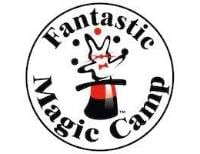I remember dreaming of summer as a kid – long days with nothing to do, popsicles, dips into cool pools and endless playdates. Never did I picture working math problems, practicing spelling or reading to get ahead! I enjoy hearing my own children wax poetic about the freedom that summer represents, but as a parent and former educator, I am also aware of the dreaded “summer slide,” a term for the loss in knowledge that children experience over the summer due to an extended absence from school.
Luckily, you don’t have to run your own version of school during the summer to keep your kids from backsliding completely. One of the best and easiest ways to combat summer learning loss is to encourage your child to continue reading during the summer. That might sound a lot like keeping the school experience going, but it doesn’t have to be all work and no play! Rather than requiring your child to read a set number of minutes a day, take a page from many libraries and create your own inspiring summer reading program at home.
- Choose a theme. Libraries give their summer reading programs a theme for a reason – it’s a great way to build excitement and to get kids interested in reading. Talk to your child about her interests and build your theme around one of those. For example, if your child loves the ocean, a fitting program name would be “Under the Sea.” You can provide a number of books on fish, dolphins and other sea creatures to keep your little oceanographer engaged.
- Set goals. Let your child and other family members set an individual reading goal – it can be number of pages, number of minutes, number of books or even types of books read. You may have to help your child choose a realistic goal. Having a specific and realistic goal to work towards will increase your child’s likelihood of success. And, even if he falls short, he will likely read more than he would have without a goal.
- Create a reading log. Make a simple, physical or digital document where each reader can log the minutes, pages or books that he reads. Being able to see the numbers stack up can be very motivating for children. Not feeling creative? You can find lots of free, downloadable reading logs online.
- Incorporate prizes! Up the fun factor by incorporating prizes for specific points on the path to your child’s overall goal and then one ultimate prize at the end. Prizes can be things like a trip to the ice cream shop or movie theater or a wished for toy. There is no need to spend money, however. A trip to a new park, a family movie night at home or a sleepover with a friend are all fun rewards that don’t come with a price tag.
- Think outside the book. Many kids who aren’t interested in reading find reading on a digital reader, reading app or listening to an audio book to be much more appealing. If you have a reluctant reader, don’t scrap a reading plan altogether. Instead, use a digital library to help your child keep reading over the summer.
Austin Public Library offers free library cards for anyone living within Austin city limits or for any student enrolled in any school in Travis County – including private school, charter, and home school students. The library card can be used to access numerous, free virtual library options.
- Encourage creative reading. How children read at home and during the summer can be so much more flexible than how they need to read at school – typically silently and at their desks. Encourage your child to try out different and unusual reading spots like a tree outside, on a blanket under the kitchen table, or even in the bathtub (without the water – no fines, please!).
Your child might also enjoy reading to a favorite stuffed animal, family pet, younger sibling, grandparent or neighbor. Zoom can allow your child to read to far away family members and bond at the same time. Finally, many children get a kick out of recording themselves reading so they can listen back to the story again later.
- Involve your child. To build excitement for your summer reading plan, involve your child in the planning from the beginning. When she contributes her ideas to the plan, she is even more likely to be enthusiastic about participating and you know the prizes she picks will be winners.
The best kind of learning is the kind that doesn’t even feel like learning. When children are excited and engaged, the growth comes naturally. Creating a summer reading program will help your child not only avoid the dreaded summer slide but can help lay the foundation for a love of reading that will carry him into the next school year and beyond.
Alison Bogle is a writer living in Austin with her husband and three children. A former fourth grade teacher, she now enjoys writing about children and education. You can also catch her talking about articles from Austin Family magazine each Thursday morning on FOX 7 Austin.


















